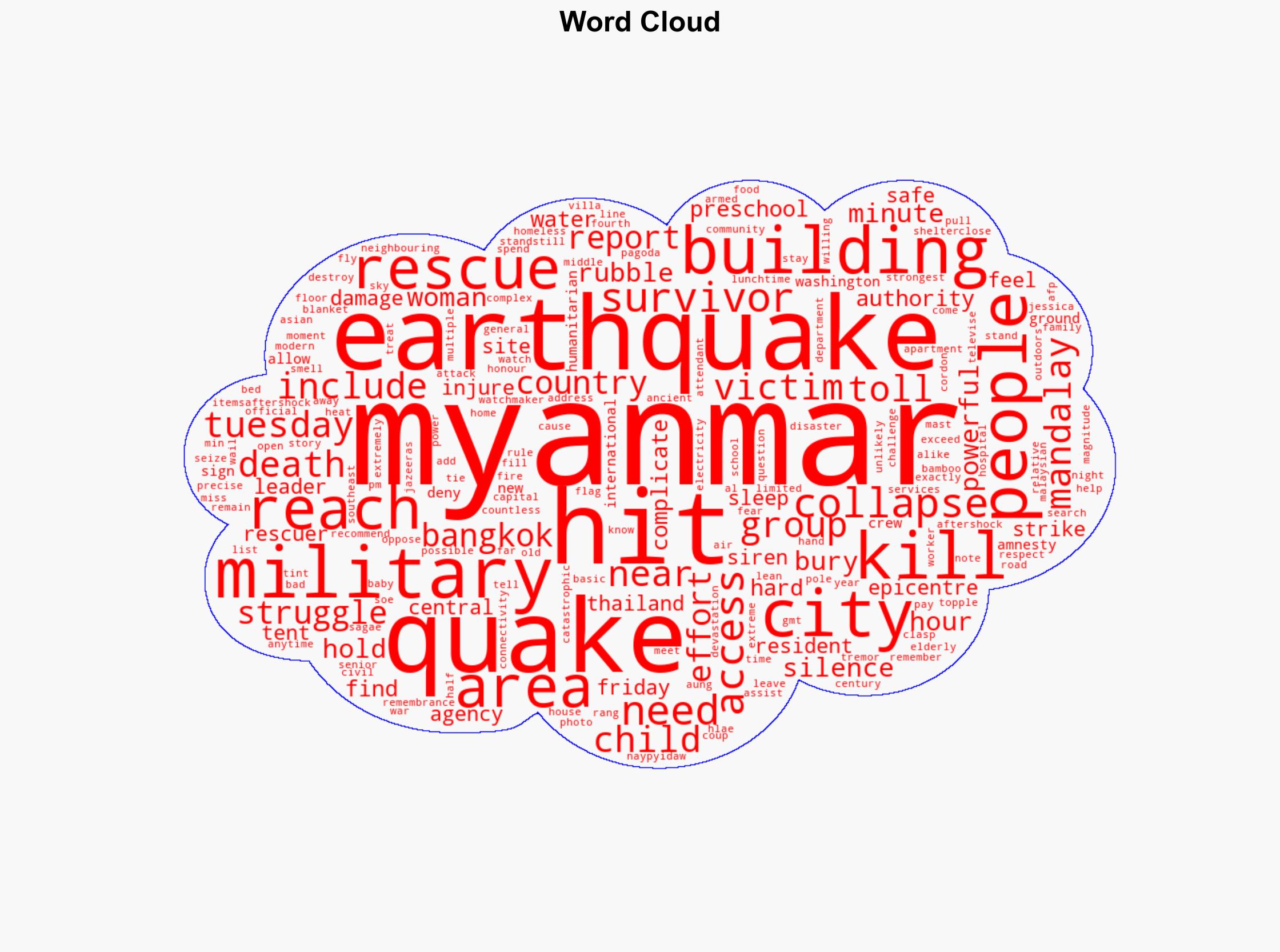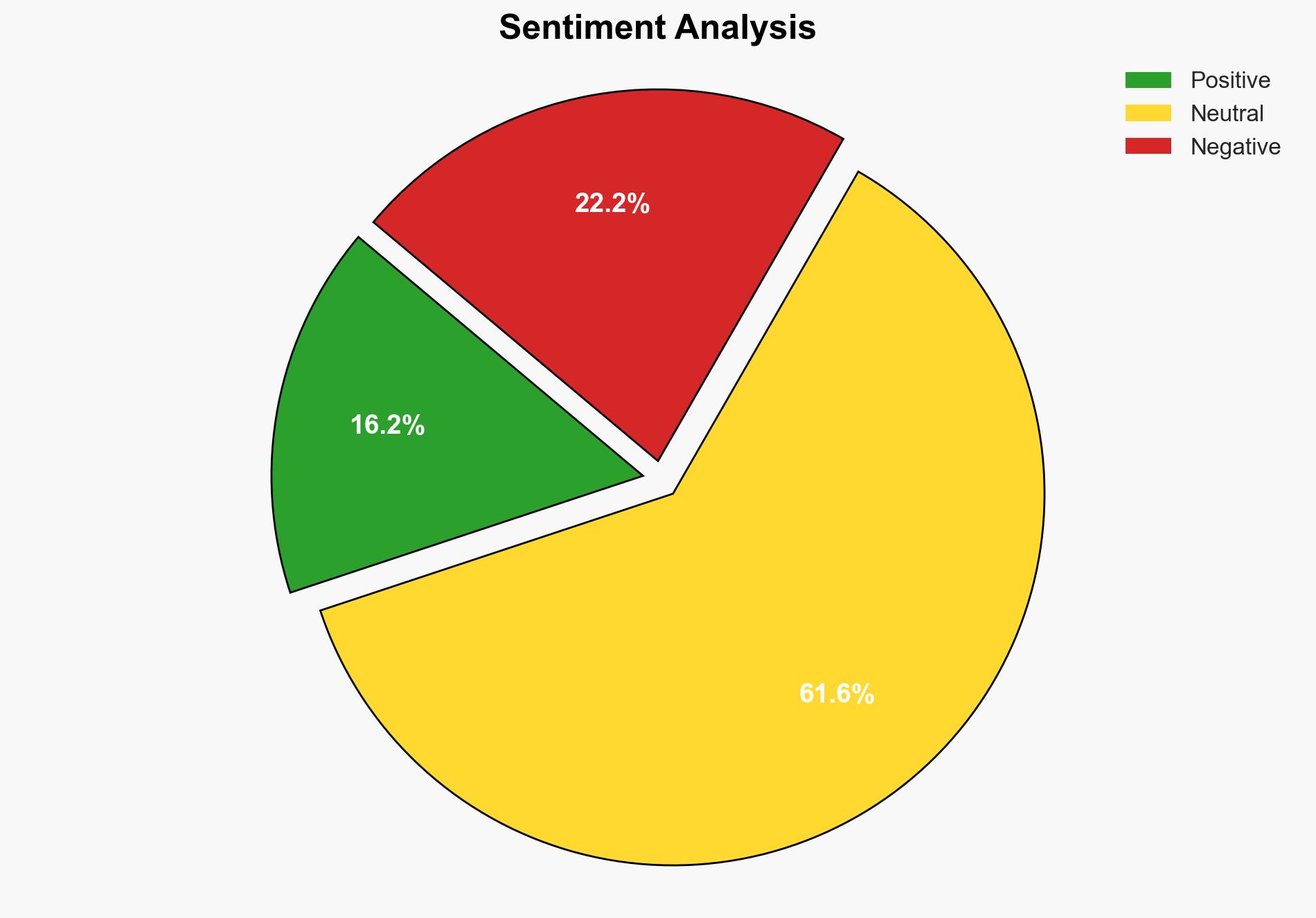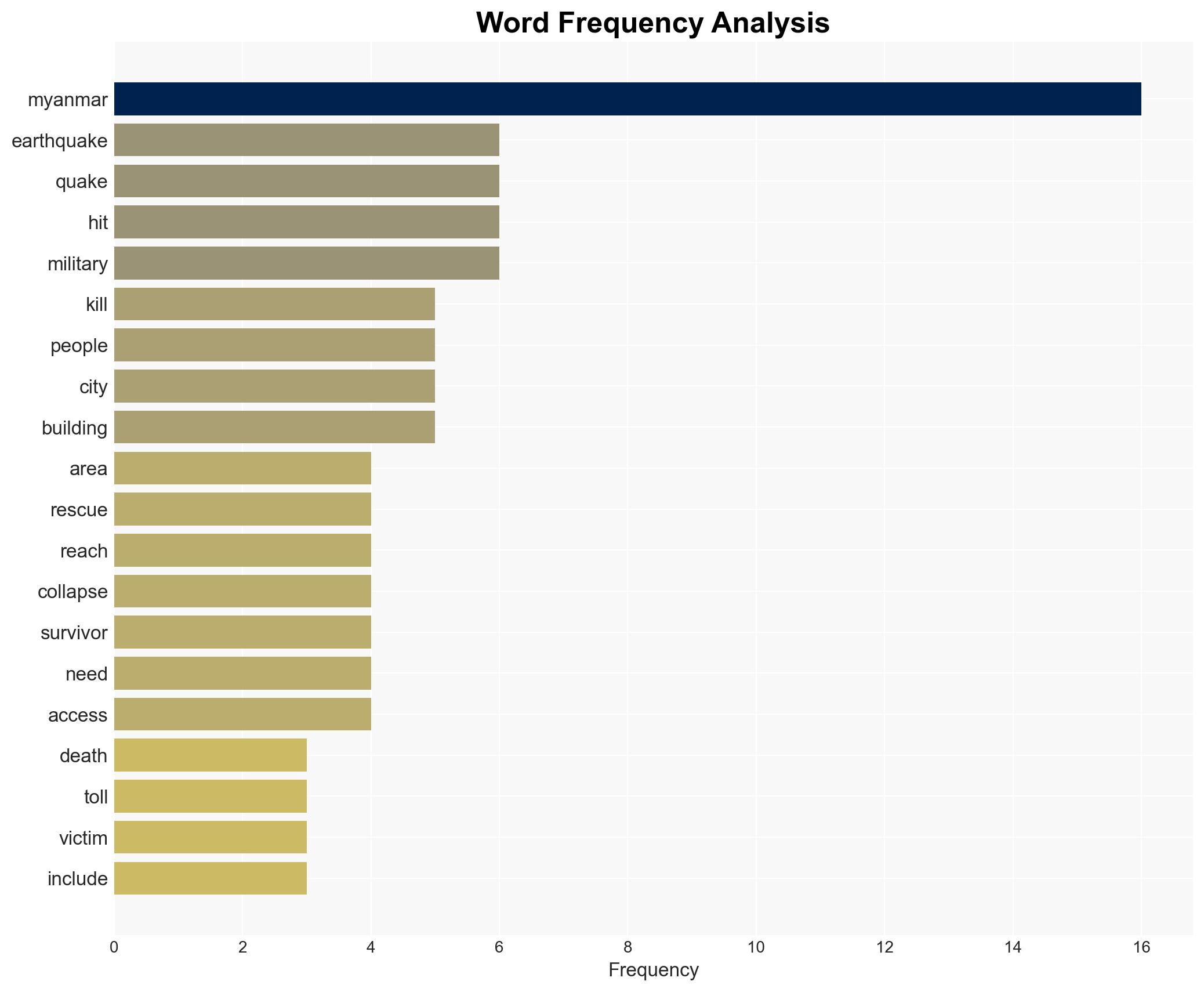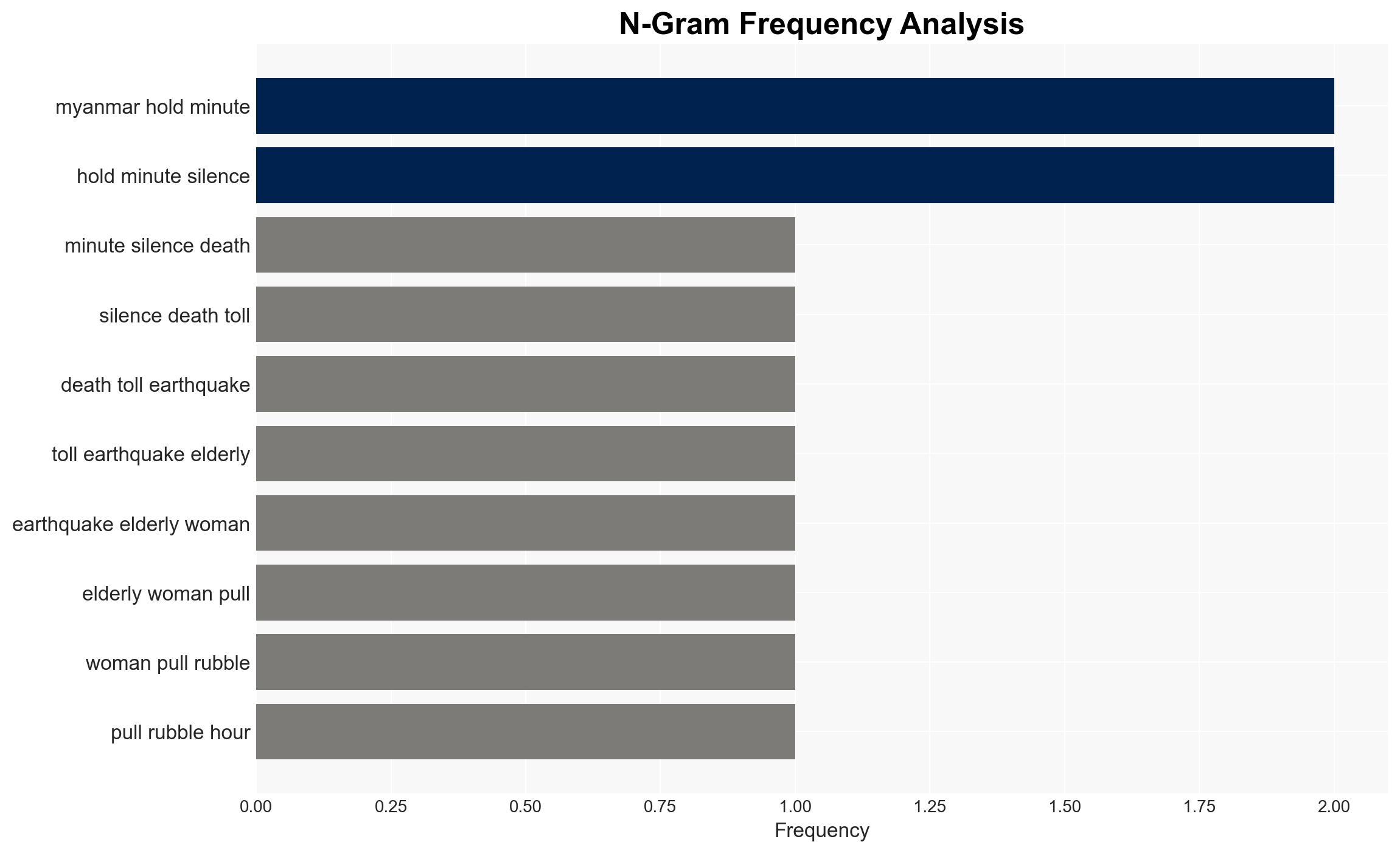Myanmar holds minute of silence as death toll from earthquake tops 2700 – Al Jazeera English
Published on: 2025-04-01
Intelligence Report: Myanmar holds minute of silence as death toll from earthquake tops 2700 – Al Jazeera English
1. BLUF (Bottom Line Up Front)
Myanmar has experienced a catastrophic earthquake resulting in over 2700 fatalities, with significant damage to infrastructure and ongoing humanitarian challenges. Immediate international assistance is crucial to support rescue and recovery efforts, as well as to address the basic needs of affected populations. The situation is further complicated by internal conflict and limited access to certain areas.
2. Detailed Analysis
The following structured analytic techniques have been applied for this analysis:
General Analysis
The earthquake, one of the strongest in Southeast Asia in a century, struck near Mandalay, causing widespread destruction of both ancient and modern structures. The disaster has led to a humanitarian crisis, with survivors struggling to access food, water, and shelter. The ongoing civil conflict in Myanmar poses additional challenges to rescue operations and aid delivery. Reports indicate that military and armed groups have restricted access to some critical areas, hindering relief efforts.
3. Implications and Strategic Risks
The earthquake’s impact on Myanmar’s infrastructure and population presents significant risks to regional stability and economic interests. The disruption of basic services and infrastructure could exacerbate existing tensions and lead to further displacement of populations. The international community’s response, or lack thereof, may influence geopolitical dynamics in the region. Additionally, the potential for aftershocks remains a concern, posing further risks to already weakened structures.
4. Recommendations and Outlook
Recommendations:
- Facilitate immediate international humanitarian aid and ensure unimpeded access to affected areas.
- Encourage diplomatic engagement to negotiate access and cooperation with local authorities and groups.
- Implement technological solutions for rapid assessment and distribution of resources to the most affected regions.
Outlook:
In the best-case scenario, international aid effectively reaches all affected areas, mitigating the humanitarian crisis and stabilizing the region. In the worst-case scenario, continued restrictions and internal conflict exacerbate the crisis, leading to further loss of life and regional instability. The most likely outcome involves a mixed response, with some areas receiving adequate support while others remain underserved due to ongoing access challenges.
5. Key Individuals and Entities
The report mentions significant individuals and organizations but does not provide any roles or affiliations. Notable individuals include Min Aung Hlae and Jessica Washington. Organizations such as Amnesty International and United Nations humanitarian agency OCHA are also referenced.





